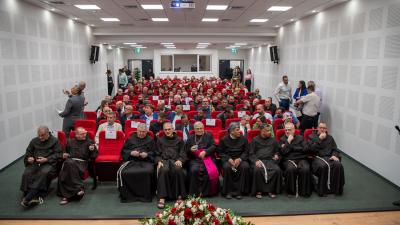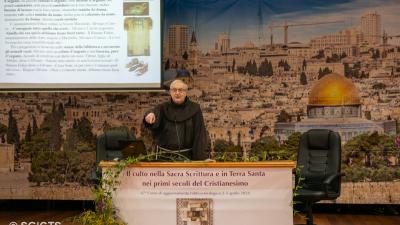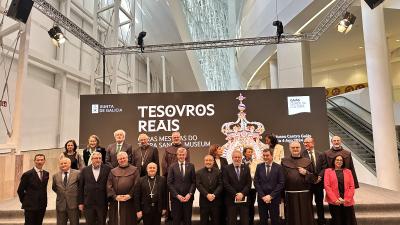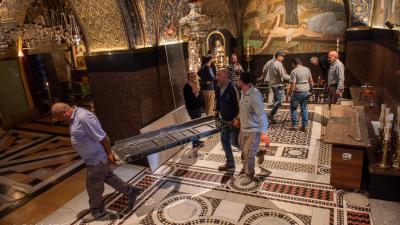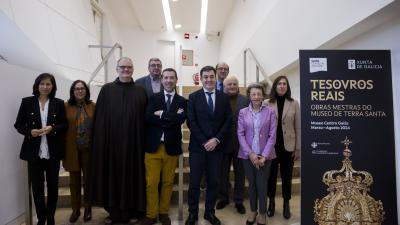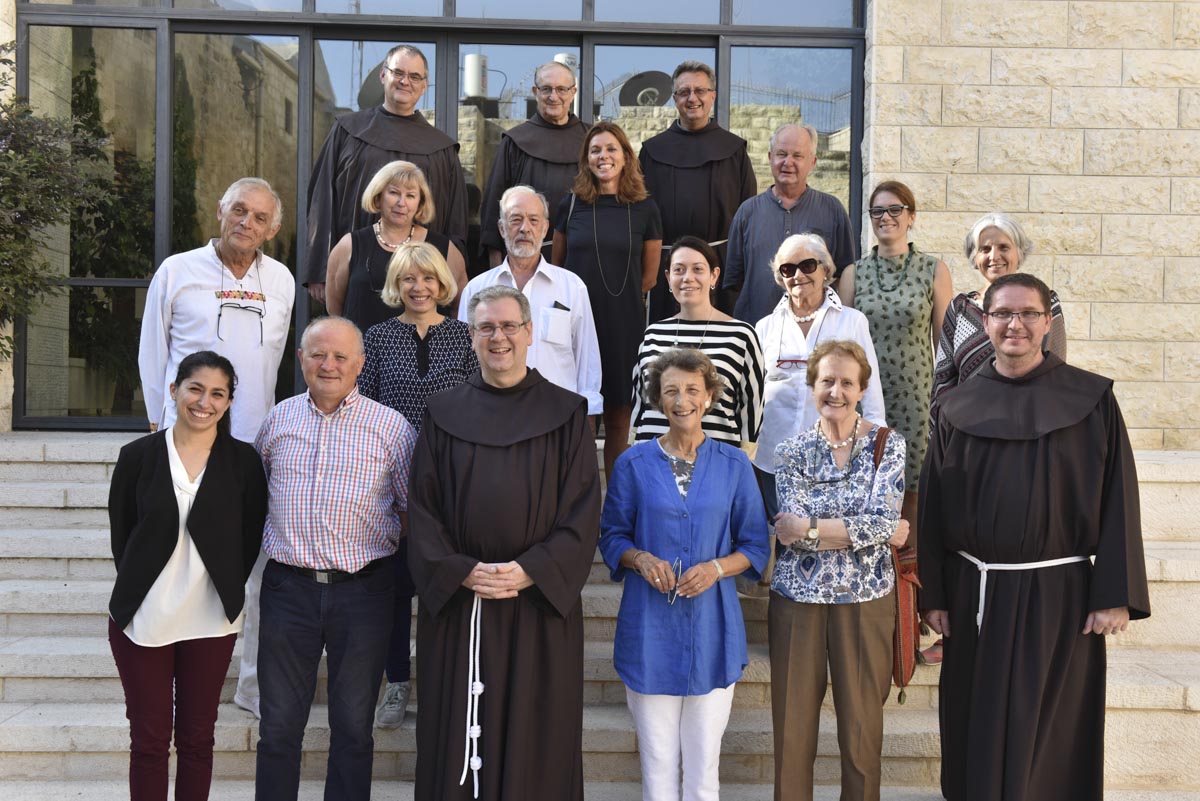
There is an air of change at the Museum of the Custody of the Holy Land and it has an international flair. The Terra Sancta Museum in Jerusalem has a new scientific committee composed of directors and experts from all over the world. Gathering for the first time in Jerusalem, from September 13 to 17, the new group of scholars will contribute to founding the historical part of the museum. The committee is led by Béatrix Saule, Honorary Director General of the Versailles Castle, and is led by Fr. Stéphane Milovitch, Director of Cultural Heritage of the Custody of the Holy Land and Fr. Eugenio Alliata, Director of the Multimedia and Archaeological Section of the Terra Sancta Museum .
THE COMMITTEE MEMBERS. Several illustrious names are involved in the project: Barbara Jatta, Director of the Vatican Museums, Andreina Contessa, Director General of the Miramare Castle Historical Museum in Trieste, Przemysław Mrozowski, the Director General of the Warsaw Castle, Gael de Guichen, ICCROM Director General (The International Centre for the Study of the Preservation and Restoration of Cultural Property), Michèle Bimbenet-Privat, Curator General of the Louvre's Works of Art Department, Jacques Charles-Gaffiot, art historian and iconographer, Benoît Constensoux, art historian of the Kugel Gallery, José Manuel Cruz Valdovinos, professor of art history at the Complutense University in Madrid, Thomas Gaehtgens, Director General of the Getty Research Institute in Los Angeles, Paulus Rainer, curator at the Kunsthistorisches Museum in Vienna, Danièle Veron-Denise, a specialist of liturgical and secular textiles, Maria Pia Pettinau Vescina, a specialist of ancient textiles, Raphaëlle Ziade, head of the Byzantine Department of the Petit Palais, the Fine Arts Museum of the City of Paris.
THE HISTORICAL MUSEUM. The new historical section will be open to the public after two or three years of work, according to the intentions set by the new expert commission, and is part of the general mission for the museum, launched in 2013. A multimedia, an archaeological and a historical section are also in the works. While the multimedia section was inaugurated in March 2016 and can be visited today at the Franciscan Monastery of the Flagellation, reconstruction work of the archaeological section is underway. The third section will be housed at St. Savior’s Monastery in Jerusalem’s Old City. The oldest places will be dedicated to illustrating Franciscan history and the apostolic missions and the larger spaces will be dedicated to the famous Treasury of the Holy Sepulcher, the gifts made by the sovereigns from all over Europe to the Holy Sepulcher. The committee will continue the work at a distance and on site, with regular meetings in Paris and Jerusalem.
AN EXTRAORDINARY COLLECTION. In the intense days of work, the Franciscan friars have shown the committee the various sections of the Terra Sancta Museum and the works designed to be exhibited in the future historical museum. There was a discussion about conservation, target audience and the contribution that each member of the committee can make. “I think I can bring my experience in the Holy Land to this project, having lived here many years,” said Andreina Contessa, Director General of the Trieste Castle. “I will bring my museum experience, relationships with the Jewish world and with a wider audience than that of pilgrims.” Speaking of the works displayed, Andreina Contessa commented: “Many of the works that come from Europe reflect all of the love that there has been for Jerusalem. They are objects that have been splendidly conserved with much love by the friars of the Custody of the Holy Land for many years.” Warsaw Castle Director General Przemysław Mrozowski also expressed the same astonishment for the preserved collections by the Franciscans: “I had seen some of the objects in the exhibit catalog that had previously been held in Versailles, but since the imagination is limited, I could not imagine so much.” Gael de Guichen, a conservation and restoration specialist, was also impressed by the works of art: “I saw an exceptional collection of incredible items, which have also been used very little and have been well preserved. We will have to work to avoid damaging them when they are on display, because objects will be put under shock. But we must convey the same pleasure in admiring these items that I had seeing them the first time.”
A LARGE, DIVERSE AUDIENCE. The Director General of the Vatican Museums, Barbara Jatta commented enthusiastically about her experience: “It is an honor and pleasure to be here in Jerusalem as a scientific committee of the nascent historical museum of the Franciscans of the Custody of the Holy Land,” she said. “The Vatican Museums welcome not only pilgrims, but also general visitors, and I believe this is also true in the Old City of Jerusalem,” she explained. “The aim of the nascent museum is to not only have Christian pilgrims, but to interact with the other realities that are there.” The Warsaw Castle Director agreed: “It is not a matter of nationality: all those who come to Jerusalem might be interested in seeing a museum like this, and in learning more about this kind of past. If it is well recommended, people will visit it.”
“We want to present the Christian dimension of the city of Jerusalem and we want to reach the whole world because the Gospel started in Jerusalem and went out to the whole world,” said Fr. Stéphane Milovitch, Director of Cultural Heritage of the Custody of the Holy Land. In order to get as far as possible, the role of the committee is crucial, as Béatrix Saule, Honorary Director General of the Versailles Castle and promoter of the committee, explained. “The best international specialists from across different disciplines are gathered here,” said Mrs. Saule, “so as to develop the research that still needs to be carried out for this museum and to enhance it. They all enthusiastically supported it for the quality and value of this collection.”
A PROJECT OF GREAT VALUE. The Custos of the Holy Land, Fr. Francesco Patton, followed the creation of the committee and the closure of the first session of its work. The project, according to the Custos, has cultural, evangelization and educational value. “It has an important cultural value and it is fundamental for dialogue here on the Holy Land, because through culture we can engage in dialogue both with the Muslim and the Jewish world,” he explained. “It also has a value for evangelization because it highlights Franciscan history in Jerusalem and therefore the Christian-Catholic identity here.” Also keeping in mind the audience of children, finally, will be important. “It also has educational value, because I hope that when we open the Terra Sancta Museum it will be frequented by the various schools in Jerusalem, Israel and Palestine,” said Fr. Patton. “The children will come and become aware of this beautiful and fascinating history, of which we are also a part.”
Beatrice Guarrera


